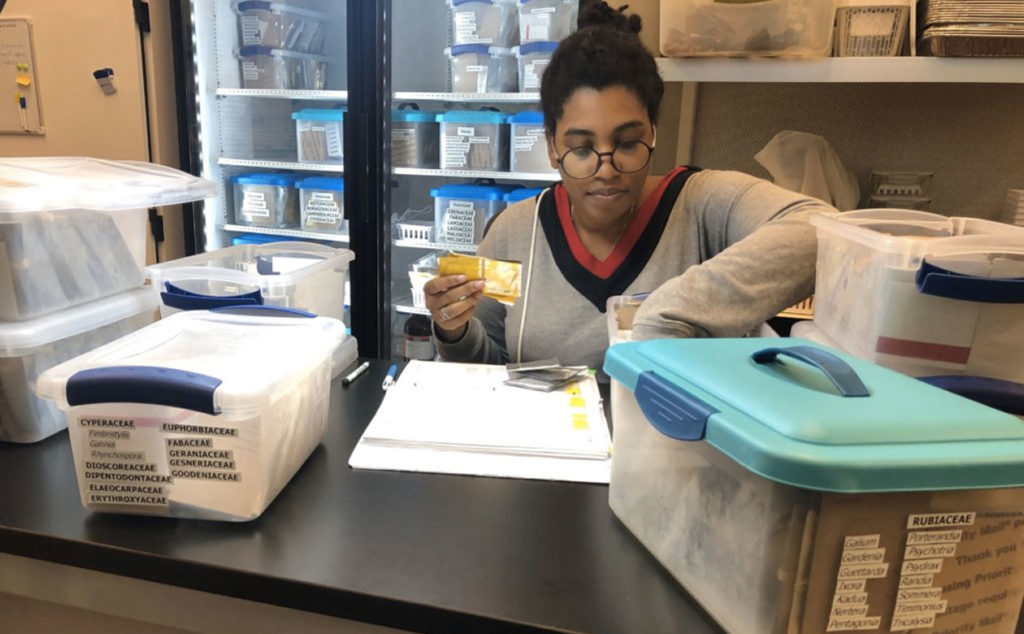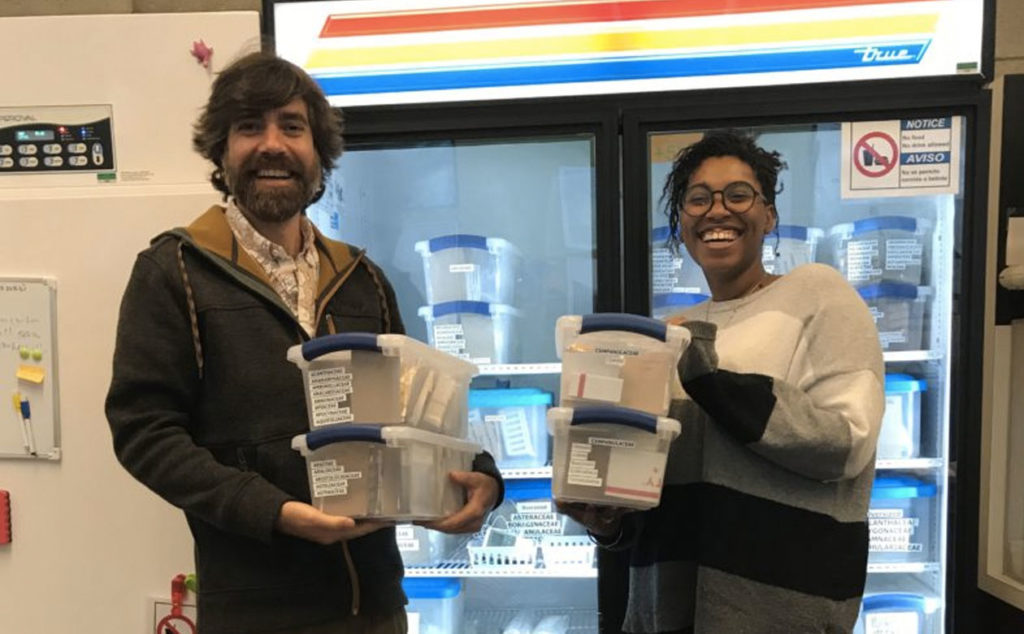
Have you ever tried to catalog, organize, and store 16 million seeds? It’s not as easy as it sounds. Working at NTBG’s Seed Bank and Laboratory as a team member with the KUPU program, I was tasked with taking the lead on conducting an inventory of NTBG’s conservation seed bank collection.
At the end of 2019, it felt like the seed bank was nearing its storage capacity. Pulling from the collection had become cumbersome and needlessly complicated so, together with Seed Bank and Laboratory Manager Dustin Wolkis, we decided to restructure how cooled storage space was organized, conducting a complete inventory at the same time.
Seeds stored in the seed bank are kept at three temperatures (–80°C ,–18°C, and +5°C) and had been organized by decade, starting with the first collections from the 1990s, followed alphabetically by genus, species, then chronologically by accession[1] number.
Prior to this physical inventory and reorganization, when the collection was smaller, this simple scheme worked well for handling seed requests, but as the collection has grown by thousands of accessions annually, it became clear that a new system was needed to increase efficiency.

Overhauling our scheme and conducting an inventory began by creating a categorized list of every accession in the data base. The new list was reorganized so that accessions could be counted and used as a reference. Under the new system, the collection is arranged alphabetically by family, genus, species, and intra-species designations. This is followed numerically by accession number, similar to the how NTBG’s herbarium and DNA collections are organized.
By standardizing how we catalog our collections of stored plant material, we’ve created a greater sense of cohesion while making the assets in our Botanical Research Center more user-friendly.
With this year’s introduction of an additional subfreezing storage unit, we were also able to remedy overcrowded storage conditions while replacing seed containers with visible signs of wear.
In all, I spent nearly 300 hours hand-crafting materials for new storage containers and handling more than 4,000 individual accessions housed in NTBG’s seed bank. Throughout the process, I had to address numerous unanticipated complications including everything from correcting inconsistencies in old database entries to “phantom” accession numbers to the discovery of accessions once thought to be missing.
The millions of seeds NTBG stores in its seed bank include many rare and endangered taxa, including some not found in other seed banks. The seeds, representing 830 species, are regularly studied and requested for transfer to be propagated, so accurate record keeping is critical.
Part of the process of maintaining the seed bank is frequently assessing the seeds physical and physiological condition as well as regularly interacting with, and manually updating the corresponding digital records. As individual accessions are altered, their changes in condition and location are documented in the database, chronicling their life within the collection.
Once the physical portion of the inventory was complete, any remaining information gaps in the database had to be reconciled. Accessions which could not be found had to be removed and, along with these, the largest job in the data entry portion was updating the storage temperature entries and accompanying notes for each accession from all years prior to 2016 when those details were first added.
Updating the database added about 56 hours to the project, but the results were significant. While some plant taxa records remained unaccounted for, the seed bank still saw an overall increase of nearly 30 percent in taxa represented with an addition of 207 new accessions and a 12 percent increase in overall stored accessions.
Post-inventory, the most noticeable difference is in the interaction experience for anyone using the seed bank now that accession accountability has been improved. The task of pulling accessions, which previously took up to an hour, can now be done in minutes.
The new organization system is simpler, more logical, and more engaging, making it faster and easier to yield information and find the seeds that are needed, increasing the collection’s value to botany newcomers and seasoned researchers alike.
[1] A specific acquisition or collection of plant material (cuttings, seeds, etc.), either wild-collected or cultivated, which bears a unique identifying number that is cataloged and remains with that material for reference in a database